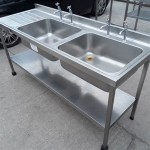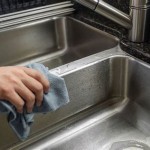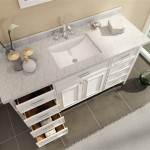Potting Bench Plans with Sink: A Comprehensive Guide
A potting bench is an invaluable asset for any gardener, providing a dedicated workspace for transplanting seedlings, preparing containers, and organizing tools. The addition of a sink elevates the functionality of a potting bench, offering a convenient water source for cleaning tools, watering plants, and handling messy tasks. This article explores the intricacies of potting bench plans that incorporate a sink, discussing design considerations, material selection, construction techniques, and plumbing options.
Planning and Design Considerations
Before embarking on a potting bench construction project, meticulous planning is essential. The first step involves determining the desired dimensions of the bench, taking into account the available space and the user's ergonomic needs. Consider the height of the bench in relation to the user's height to minimize back strain. A comfortable working height typically falls between 36 and 42 inches. The width and depth should be sufficient to accommodate pots, trays, and tools.
The sink itself is a crucial element of the design. The size and material of the sink will influence the overall construction. Smaller sinks crafted from stainless steel or durable plastic are often preferred for their ease of cleaning and resistance to corrosion. The sink's placement on the bench should be strategically determined. A central location provides convenient access from either side, while a corner placement might optimize space utilization in smaller areas. Consider the depth of the sink and ensure sufficient space beneath for plumbing connections and storage.
Storage is another critical aspect to consider. Potting benches benefit from shelves, drawers, and hooks to keep tools, soil, and supplies organized. Shelves can be positioned above, below, or to the side of the sink, depending on the available space and the desired accessibility. Drawers can be used to store smaller items such as seeds, labels, and hand tools. Hooks are ideal for hanging larger tools like trowels, pruners, and watering cans.
Drainage is an essential consideration, especially when incorporating a sink. The sink's drain outlet must be connected to a suitable drainage system. Depending on local regulations and the bench's location, options include connecting to the municipal sewer system, installing a dry well, or using a water collection system for irrigation. Proper drainage is crucial to prevent water accumulation and potential water damage.
Material Selection for Durability and Aesthetics
The selection of materials is paramount to the longevity and aesthetic appeal of the potting bench. Wood is a popular choice for its natural beauty, workability, and availability. Pressure-treated lumber is highly recommended for outdoor use due to its resistance to rot, decay, and insect infestation. Untreated lumber can be used for indoor potting benches, but it should be sealed with a water-resistant finish to protect against moisture damage.
Cedar and redwood are naturally rot-resistant wood species that can be used without pressure treatment. However, these species tend to be more expensive than pressure-treated lumber. Recycled plastic lumber is an environmentally friendly alternative that is highly durable, weather-resistant, and low-maintenance. It is also resistant to insects and rot. Metal frames are another option, offering strength and durability. Steel frames can be powder-coated to prevent rust and corrosion.
The surface of the potting bench should be constructed from a durable and easy-to-clean material. Concrete is an excellent choice for its strength, heat resistance, and water resistance. Concrete countertops can be custom-made to fit the bench dimensions and can be stained or sealed to enhance their appearance. Tile is another durable and attractive option, offering a wide range of colors and patterns. Tile is also easy to clean and resistant to stains.
For the sink itself, stainless steel is a common choice for its durability, resistance to corrosion, and ease of cleaning. Stainless steel sinks are available in various sizes and styles to suit different needs. Plastic sinks are a more affordable option, but they may not be as durable as stainless steel. Ceramic sinks are another option, offering a classic look and feel. However, ceramic sinks can be more prone to chipping and cracking than stainless steel or plastic sinks.
Construction Techniques and Assembly
Once the design and materials have been selected, the construction process can begin. Start by cutting all the lumber to the required dimensions according to the plans. Use a saw appropriate for the chosen material, ensuring precise and accurate cuts. Assemble the frame of the potting bench first, using screws, nails, or bolts to secure the joints. Ensure the frame is square and level before proceeding.
Next, install the shelves and drawers, paying attention to alignment and spacing. Use wood glue in addition to screws or nails to strengthen the joints. If drawers are included, install drawer slides to ensure smooth operation. Construct the countertop or surface of the potting bench, ensuring it is level and securely attached to the frame. Cut an opening in the countertop to accommodate the sink, following the sink manufacturer's specifications.
Install the sink into the opening in the countertop, using sealant to create a watertight seal. Connect the sink's drain outlet to the drainage system, ensuring all connections are tight and leak-proof. Test the drain system by running water into the sink and checking for leaks. Add any additional features, such as hooks, tool holders, or decorative elements. Apply a protective finish to the wood or metal surfaces to enhance durability and weather resistance.
Proper bracing is crucial for a stable and long-lasting potting bench. Corner braces can be added to the frame to increase its rigidity. Cross braces can be installed between the legs to prevent racking. The weight of the countertop and the items stored on the shelves will add significant stress to the frame, so adequate bracing is essential. Consult with a construction professional if necessary to ensure the structural integrity of the potting bench.
Plumbing Options and Installation
The plumbing system is a critical component of a potting bench with a sink. The simplest option is to connect the sink to a garden hose for a cold water supply. This requires installing a hose bib or faucet near the sink and connecting it to the hose. This option is suitable for basic tasks such as rinsing tools and watering plants. A more sophisticated option is to connect the sink to the hot and cold water supply lines in the house.
This requires tapping into the existing water lines and running new pipes to the potting bench. This option provides a convenient source of both hot and cold water, making it ideal for cleaning tasks and other uses. A licensed plumber should perform this type of plumbing work to ensure compliance with local codes and regulations. Another option is to install a portable water tank and pump system. This system can be used to supply water to the sink in areas where connection to a water source is not feasible.
The drainage system is equally important. Depending on the location of the potting bench, different drainage options may be available. If the bench is located near a sewer line, the sink can be connected to the sewer system. This requires installing a drainpipe from the sink to the sewer line. A licensed plumber should perform this type of plumbing work to ensure proper drainage and prevent sewer backups. A dry well is a simple and environmentally friendly drainage option.
A dry well is a hole filled with gravel or stones that allows water to percolate into the ground. This option is suitable for areas with well-draining soil. A water collection system can be used to collect rainwater from the roof and store it in a tank. This rainwater can then be used to water plants or clean tools. This option is environmentally friendly and can help conserve water. Regardless of the chosen plumbing and drainage system, it is essential to comply with all local codes and regulations.

Make It Diy Potting Bench With Sink Setting For Four Interiors

Diy Potting Bench With Sink Ana White

A Potting Table With Twist Fine Gardening

How To Create A Gardner S Potting Bench

Potting Bench With Sink Plans Myoutdoorplans

How To Make A Outdoor Potting Bench More Efficient

A Potting Table With Twist Fine Gardening

Potting Bench Plans With Sink Free Garden Gardening Tips Guides Diy

Diy Wooden Outdoor Potting Bench With Sink Free Plans The Carpenter S Daughter

Beautiful Garden Potting Bench Plans Ideas Family Food







